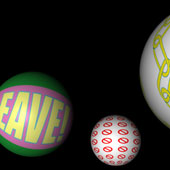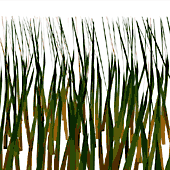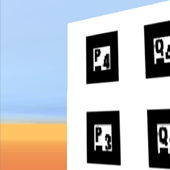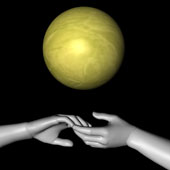OBJECTIVE
| SCENARIOS | TECHNOLOGY
| process | SOURCES
| TEAM
During the research phase various scenarios have been developed to examine different aspects of perception and interaction. The following examples show some approaches.
|
||
| texBalls
(Jan Torpus) Synopsis The living-room becomes invaded by some galactic planetary system. Textured balls with a diameter of approximately 100cm turn in a simultaneous rhythm around the same centre-point. The basic texture element can be recognized as a symbol or word whenever the balls are in a silent mood. The player can position her/himself within the ball and be completely surrounded by the virtual body, seeing the texture from inside. The position of the balls is in reference to the table where the book is. Focus Texballs focuses on the possibilities of virtual special separation units and the possibilities of texture application on 3d-models. Virtual walls can be placed to cover sight or to display information like images, moving images, text, etc. The inner and outer surface could display different images in a labyrinth of virtual objects or an exhibition-like space. |
 |
|
| grass
(Roderick Galantay) Synopsis "Grass" plays with the contrasts between in and outside and between the built living-room environment and an abstraction of nature. The main objective was to find a surprising and unexpected new perception of real space by augmenting animated and interactive grass with bird-sounds. Focus "Grass" focuses on an abstraction of waving grass, which depending on the users position changes colour and is seen in different lighting. The illusion of standing in grass is amplified by the chirp of birds. The user is encouraged to change his/her position to discover different birds and invoke the illusion of different imaginative landscapes. The virtual setting is confined to the limits of the living-room-space and so stays in a contrasting dialog with the real-space. The openness of waving grass and the echoes of close and distant birds seem to extend the room to greater dimensions on a combined level of perception. |
 |
|
|
|
||
| CLOUDS (Maia Engeli) Synopsis A living room is more than a space strictly defined by walls. The mind likes to wander into virtual worlds. In a similar way this scenario allows one to move between the physical room defined by walls and the expanded room of the layered skies. The boundaries of living-room dissolve and the perceived space stretches beyond the physically possible. Focus This example of augmented reality shows how augmentation can be applied to augment space by extending the perceived volume. The position in space defines the amount of blurring between the sky space and the living-room. If the player stands in the middle of the room he or she is immersed in the floating skies. The boundaries of the physical space become more visible when moving closer towards them. It is planned to expand the scenario and apply a dynamically changing “dawn til dusk” colour scheme by interpreting the direction of the user’s gaze as the time of day. |
 |
|
|
|
||
| zygotes
(Jan Torpus) Synopsis Zygotes is a piece with an interactive narrative. The player has to move around and according to her/his position in the living-room some humanoids enter the scene forming a constellation. As soon as the player has found all the zygotes longing for the sun, the scene follows a linear autonomous succession with an end and further sets itself up again for another session. Focus Zygotes focuses on the appearance of virtual human figures. The humans don’t move, have neither coloured skin nor textured clothes, which makes them lifeless, virtual and somehow frightening. They have no hair and the sound they are related to is not human. But the human scale and the special appearance still evokes the feeling of a human presence. The scene questions the frontiers between virtual and real space. The scene further evaluates the possibilities of narrative structures with the AR-technology. The user feels as though he/she is within a computer game, but unlike in VR-environments, parts of the scene can be introduced as the real world objects and can therefore be physically experienced – in this example through the use of the round carpet on the floor. |
 |
|
|
|
||




















